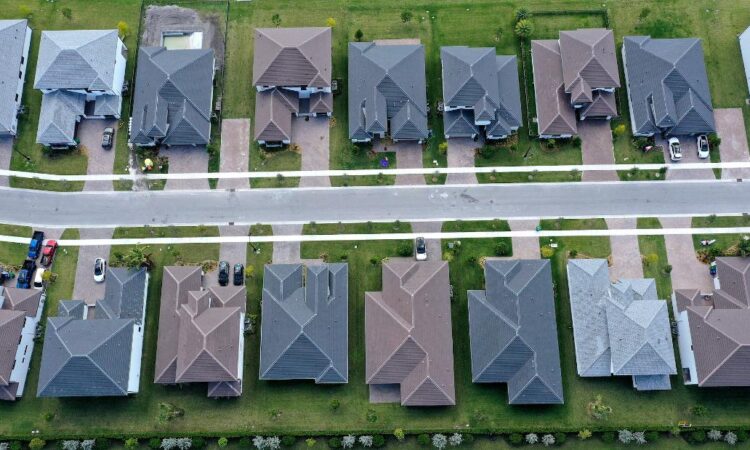
Washington, DC(CNN) Mortgage rates dropped again this week for the second week in a row amid lingering concerns about bank failures and uncertainty in the financial markets.
The 30-year fixed-rate mortgage averaged 6.42% in the week ending March 23, down from 6.60% the week before, according to data from Freddie Mac released Thursday. A year ago, the 30-year fixed-rate was 4.42%.
“Mortgage rates continued to slide down as financial market concerns came to the fore over the last two weeks,” said Sam Khater, Freddie Mac’s chief economist.
That’s good news for homebuyers who are seeing rates retreat slightly and home prices stabilize.
“If mortgage rates continue to slide over the next few weeks, look for a continued rebound during the first weeks of the spring homebuying season,” he said.
The average mortgage rate is based on mortgage applications that Freddie Mac receives from thousands of lenders across the country. The survey includes only borrowers who put 20% down and have excellent credit.
Fed signals rate hikes coming to an end
After hitting a 2022 high of 7.08% in November, rates had been trending down. However, they started climbing again in February. Robust economic data suggested the Federal Reserve was not done in its battle to cool the US economy and would likely continue hiking its benchmark lending rate.
It did so on Wednesday. The Federal Reserve raised interest rates by a quarter point in an effort to continue to fight stubbornly high inflation while taking into account recent risks to financial stability.
Yields on 10-year US Treasury bonds climbed on Tuesday ahead of the meeting as investors prepared for the impact of the committee’s revised rate projections, said Hannah Jones, economic data analyst at Realtor.com. But rates fell on Wednesday on news from the Fed that its series of aggressive rate hikes could be coming to an end.
The Fed emphasized a commitment to cooling inflation to its 2% target, but pulled back its stance on additional rate increases. Fed Chair Jerome Powell said recent banking sector instability is likely to lead to tighter lending requirements, which could serve to cool inflation.
“Depending on the extent of the impact of a tighter banking sector, Powell expressed a ‘wait-and-see’ approach to further contractionary policy,” Jones said. “However, the federal funds rate is expected to remain elevated through the end of the year, meaning that a higher interest rate environment is here to stay for the time being, including for home loans.”
The Fed does not set the interest rates that borrowers pay on mortgages directly, but its actions influence them. Mortgage rates tend to track the yield on 10-year US Treasury bonds, which move based on a combination of anticipation about the Fed’s actions, what the Fed actually does and investors’ reactions. When Treasury yields go up, so do mortgage rates; when they go down, mortgage rates tend to follow.
Home affordability is not improving
While a slight retreat in rates over the past week boosted applications, home affordability worsened through February.
“Mortgage applications increased for the third consecutive week, despite the ongoing volatility in the financial markets and the broader economy,” said Bob Broeksmit, president and CEO of the Mortgage Bankers Association.
While rates remain much higher than a year ago, he said MBA is forecasting a gradual decline, with the 30-year fixed rate falling to around 5.3% by the end of the year.
Homebuyer affordability declined in February, according to MBA, with the national median monthly payment for those applying to purchase a home rising nearly 5% to $2,061 from $1,964 in January.
Ongoing affordability challenges weigh on buyers and sellers preparing for the spring housing market, said Jones.
“Each downward tick in mortgage rates is met with increased buyer demand, as many eager home shoppers take advantage of the slightly lower cost of financing a home,” she said. “Home shoppers are looking to find the optimal combination of prices and mortgage rates before entering the market.”
But, she added, elevated rates and high prices mean that point doesn’t yet exist in the market for many would-be buyers.
“At the current price and mortgage rate level, the typical housing payment on a median-priced home is 43% higher than one year ago,” said Jones.






